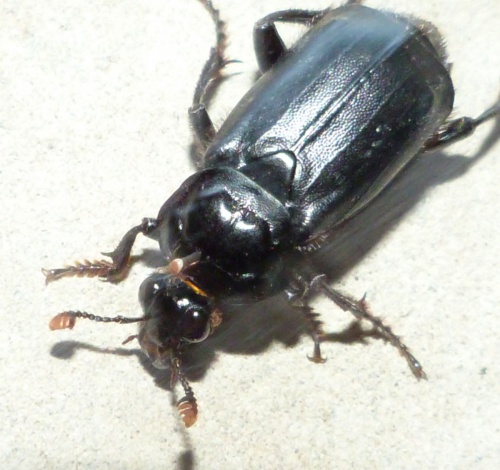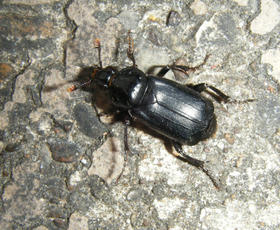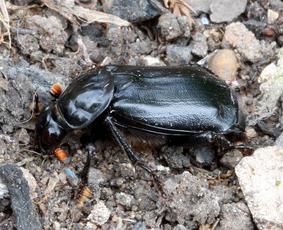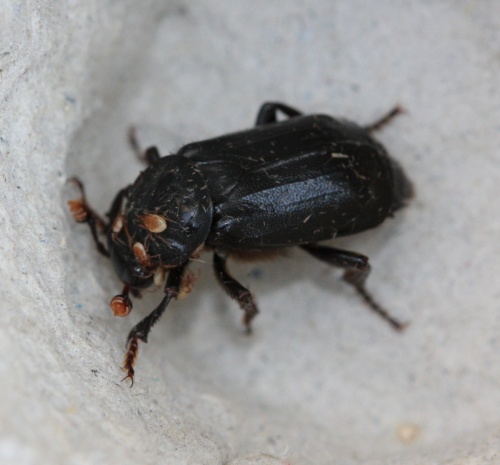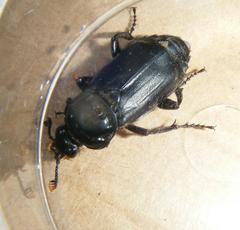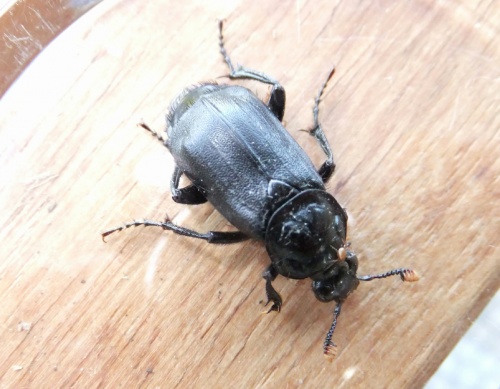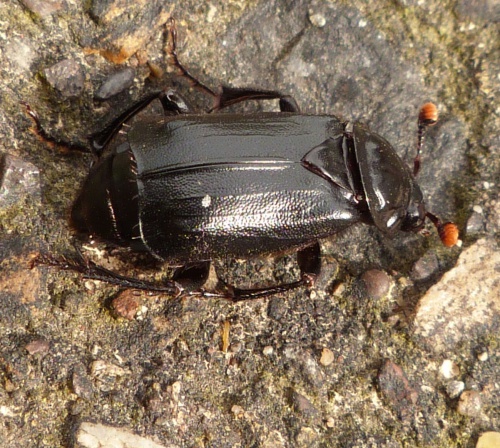Black Sexton Beetle - Nicrophorus humator
There are several Sexton beetles in the UK but this is the only all black species (apart from the orange tips to its antennae) and it is large (20-30 mm).
As they fly long distances to feed on carrion they can be seen a wide variety of habitats were their food is to be found.
Mainly April to September.
The Sexton beetles are the undertakers of the insect world. They fly to carrion, attracted by the smell. If the dead animal is small, such as a mouse, they crawl underneath and excavate the soil so that the corpse gradually sinks into the ground. They then lay eggs nearby, and stay until the larvae hatch, and even feed them.
Fairly common over much of Britain.
Fairly common in Leicestershire and Rutland. There were a total of 103 VC55 records for this species up to March 2015.
Leicestershire & Rutland Map
Enter a town or village to see local records
MAP KEY:
Yellow squares = NBN records (all known data)
Coloured circles = NatureSpot records: 2020+ | 2015-2019 | pre-2015
UK Map
Species profile
- Common names
- Black Sexton Beetle
- Species group:
- Beetles
- Kingdom:
- Animalia
- Order:
- Coleoptera
- Family:
- Silphidae
- Records on NatureSpot:
- 146
- First record:
- 21/04/2006 (Nicholls, David)
- Last record:
- 10/05/2024 (Pugh, Dylan)
Total records by month
% of records within its species group
10km squares with records
The latest images and records displayed below include those awaiting verification checks so we cannot guarantee that every identification is correct. Once accepted, the record displays a green tick.
In the Latest Records section, click on the header to sort A-Z, and again to sort Z-A. Use the header boxes to filter the list.


